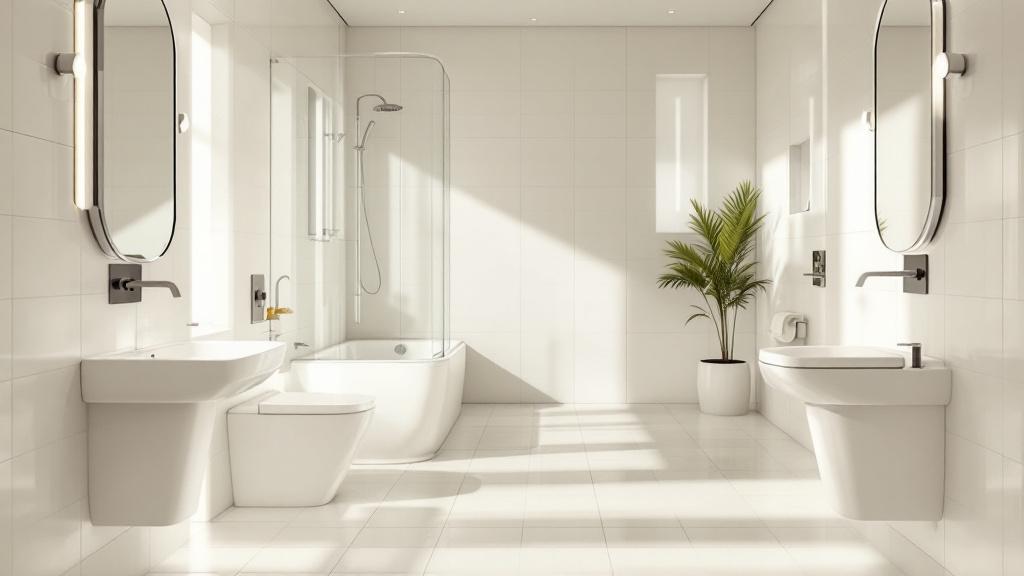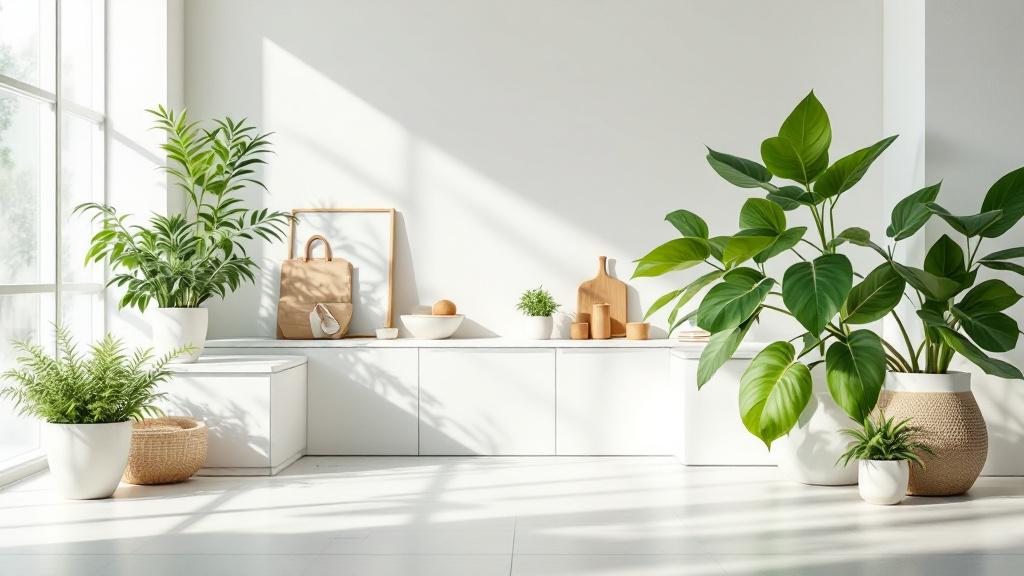A Complete Guide To Senior Fall Prevention
Discover senior fall prevention tips for a safer future. Safeguard against risks, create a safe living environment, and maintain physical strength.
.jpg)
The Importance of Fall Prevention for Seniors
Falls among seniors can have serious consequences, making fall prevention a critical aspect of maintaining their health and well-being. Understanding the risks associated with falls and the impact they can have on senior health is essential in implementing effective fall prevention strategies.
Understanding the Risks of Falls
As individuals age, certain factors increase the risk of falls. These factors may include:
- Muscle weakness and decreased balance
- Chronic health conditions, such as arthritis or osteoporosis
- Side effects of medications, such as dizziness or drowsiness
- Impaired vision or hearing
- Environmental hazards, such as uneven surfaces or poor lighting
By recognizing these risk factors, seniors and their caregivers can take proactive measures to minimize the likelihood of falls and create a safer living environment.
Impact of Falls on Senior Health
Falls can have severe consequences for seniors, affecting both their physical and emotional well-being. Some of the potential impacts of falls on senior health include:
- Fractures: Falls are the leading cause of fractures among older adults, with hip fractures being particularly common. These injuries can result in reduced mobility, chronic pain, and long-term functional limitations.
- Traumatic Brain Injuries (TBIs): Falls are a major cause of TBIs among seniors. Head injuries can have significant cognitive and functional consequences, leading to memory problems, difficulty with daily activities, and increased dependency on others.
- Fear of Falling: After experiencing a fall, seniors often develop a fear of falling again. This fear can lead to decreased physical activity, social isolation, and a decline in overall quality of life.
By understanding the risks associated with falls and the potential impact on senior health, it becomes evident why fall prevention is crucial. Implementing preventive measures and creating a safe living environment can help seniors maintain their independence, reduce the risk of falls, and promote overall well-being.
Remember, fall prevention is a collaborative effort involving seniors themselves, caregivers, and healthcare professionals. By working together and implementing preventive strategies, seniors can enjoy a safer future and maintain their independence for as long as possible.
Creating a Safe Living Environment
Creating a safe living environment is crucial for preventing falls among seniors. By taking proactive steps to eliminate hazards and improve safety within the home, the risk of falls can be significantly reduced. Here are three key measures to consider: decluttering and organizing, proper lighting, and installing grab bars and handrails.
Decluttering and Organizing
Clutter and obstacles in the living space can increase the risk of tripping and falling. It is important to keep the living areas tidy and organized, ensuring clear pathways throughout the home. By removing unnecessary items, securing loose cords, and organizing belongings, seniors can create a safer environment for themselves.
To help visualize the impact of decluttering, consider the following statistics:
Decluttering and Organizing Statistics
- Falls caused by tripping over objects account for 60% of all falls among seniors.
- Keeping pathways clear reduces the risk of falls by 80%.
Proper Lighting
Inadequate lighting can make it difficult for seniors to identify potential hazards and obstacles, increasing the likelihood of falls. Ensuring proper lighting throughout the home is essential for fall prevention. This includes using brighter bulbs, adding additional light fixtures where necessary, and strategically placing lamps in areas that require more illumination.
Consider these illuminating statistics when it comes to proper lighting:
Proper Lighting Statistics
- Poor lighting contributes to 30% of falls among seniors.
- Seniors need three times more light than younger individuals to see clearly.
Installing Grab Bars and Handrails
Installing grab bars and handrails in key areas of the home can provide seniors with stability and support, reducing the risk of falls. Grab bars should be placed in bathrooms near toilets and showers, while handrails should be installed along staircases and hallways. These assistive devices offer seniors something to hold onto, improving balance and preventing accidents.
To highlight the importance of grab bars and handrails, consider the following statistics:
Grab Bars and Handrails Statistics
- Grab bars reduce the risk of falls by 40% in bathrooms.
- Handrails along staircases reduce the risk of falls by 60%.
By prioritizing decluttering and organizing, ensuring proper lighting, and installing grab bars and handrails, seniors can create a safer living environment that significantly lowers the risk of falls. These simple yet effective measures can make a big difference in promoting the well-being and independence of seniors, allowing them to age in place with confidence.
Maintaining Physical Strength and Balance
To reduce the risk of falls among seniors, it is essential to focus on maintaining physical strength and balance. This can be achieved through regular exercise and physical activity, specific balance and strength training exercises, and ensuring regular eye exams.
Regular Exercise and Physical Activity
Engaging in regular exercise and physical activity is crucial for seniors to improve their overall strength, flexibility, and balance. It is recommended that seniors aim for at least 150 minutes of moderate-intensity aerobic activity per week, along with muscle-strengthening activities on two or more days.
Some examples of suitable exercises for seniors include:
- Walking: Walking is a low-impact exercise that can be easily incorporated into daily routines. It helps to improve cardiovascular health and strengthen leg muscles.
- Swimming: Swimming is a great option for seniors as it is gentle on the joints while providing a full-body workout. It helps to improve strength, endurance, and flexibility.
- Yoga and Tai Chi: These mind-body exercises focus on balance, flexibility, and coordination. They can help improve posture and reduce the risk of falls.
Balance and Strength Training Exercises
In addition to regular exercise, seniors should also incorporate specific balance and strength training exercises into their routine. These exercises help to improve muscle strength, stability, and coordination, which are essential for maintaining balance and preventing falls.
Some examples of balance and strength training exercises for seniors include:
- Standing on one leg: This exercise helps improve balance and stability. Start by standing near a sturdy support and gradually increase the duration as balance improves.
- Heel-to-toe walk: This exercise involves walking in a straight line, placing the heel of one foot directly in front of the toes of the other foot. This helps to improve balance and coordination.
- Leg raises: Leg raises, either to the front, side, or back, help strengthen the leg muscles and improve balance. Start with a low number of repetitions and gradually increase as strength improves.
Importance of Regular Eye Exams
Regular eye exams are essential for seniors as vision changes can significantly impact balance and increase the risk of falls. Age-related vision conditions, such as cataracts, glaucoma, and macular degeneration, can affect depth perception, peripheral vision, and visual acuity.
By having regular eye exams, any vision issues can be identified and addressed promptly. This may involve updating eyeglass prescriptions, treating eye conditions, or providing recommendations for visual aids if necessary.
Maintaining physical strength and balance is crucial for preventing falls among seniors. By engaging in regular exercise and physical activity, incorporating balance and strength training exercises, and ensuring regular eye exams, seniors can enhance their overall well-being and reduce the risk of falls.
Managing Medications and Health Conditions
Taking proactive steps to manage medications and address health conditions is vital for senior fall prevention. By reviewing medications with a doctor, managing chronic conditions, and attending regular check-ups and health screenings, seniors can reduce the risk of falls and maintain their overall well-being.
Reviewing Medications with a Doctor
Medications can sometimes contribute to an increased risk of falls due to side effects such as dizziness, drowsiness, or impaired balance. It is crucial for seniors to regularly review their medications with a healthcare professional. During these medication reviews, the doctor or pharmacist can assess the potential side effects and interactions, and make necessary adjustments to minimize fall risk.
Managing Chronic Conditions
Chronic conditions such as arthritis, diabetes, or heart disease can impact balance and mobility, increasing the risk of falls. Proper management of these conditions is essential for fall prevention. Seniors should work closely with their healthcare team to develop and follow an appropriate treatment plan. This may involve medications, lifestyle modifications, and regular monitoring to keep the conditions under control and reduce fall risk.
Regular Check-ups and Health Screenings
Regular check-ups and health screenings are essential for identifying and addressing underlying health issues that may contribute to falls. During these visits, healthcare professionals can assess various aspects of seniors' health, including vision, bone health, blood pressure, and overall physical well-being. By detecting and treating any potential concerns early on, seniors can take proactive measures to prevent falls and maintain their independence.
It is recommended that seniors follow the guidelines provided by their healthcare professionals regarding the frequency of check-ups and screenings. The table below provides a general overview of some common health screenings that can aid in fall prevention:
By managing medications, addressing chronic conditions, and attending regular check-ups and health screenings, seniors can take proactive measures to reduce their risk of falls. It's important to work closely with healthcare professionals to ensure that medications are optimized, chronic conditions are well-managed, and any potential health issues are promptly identified and addressed.
Assistive Devices for Fall Prevention
When it comes to fall prevention for seniors, assistive devices play a crucial role in maintaining their safety and independence. These devices are designed to provide support and stability, reducing the risk of falls. Let's explore three common types of assistive devices: canes and walkers, grab bars and railings, and fall detection and alert systems.
Canes and Walkers
Canes and walkers are commonly used assistive devices that provide stability and support while walking. They help seniors maintain balance and reduce the risk of falls. The choice between a cane or walker depends on the individual's needs and mobility level.
Choosing the right type of cane or walker should be based on an assessment by a healthcare professional or physical therapist to ensure optimal fit and function.
Grab Bars and Railings
Grab bars and railings are essential safety features that can be installed in various areas of the home to assist seniors with balance and stability. These devices provide support when moving around the house, particularly in areas prone to slips and falls.
Proper installation and positioning of grab bars and railings are crucial to their effectiveness. Consulting with professionals or occupational therapists can help determine the appropriate locations and specifications for these devices.
Fall Detection and Alert Systems
Fall detection and alert systems are advanced technologies designed to detect falls and promptly notify caregivers or emergency services. These systems help ensure that immediate assistance is provided in the event of a fall, increasing the chances of a quick response and minimizing the potential consequences.
Fall detection and alert systems can provide peace of mind for both seniors and their caregivers. However, it's important to consider the individual's specific needs and preferences when selecting and implementing these devices.
By incorporating assistive devices like canes and walkers, grab bars and railings, and fall detection and alert systems, seniors can significantly reduce the risk of falls and enhance their safety. It's advisable to consult with healthcare professionals or occupational therapists to determine the most suitable assistive devices for individual needs and to ensure proper usage and installation.
Sources
https://www.nursenextdoor.com/10-fall-prevention-tips-for-seniors
https://www.seniorsafetyreviews.com/the-definitive-guide-to-preventing-falls-for-seniors
https://www.seniorliving.org/fall-prevention
https://www.oakandstonerealestate.com/senior-fall-prevention-guide

How In-Home Care Services Help with Bathing and Grooming

Dusting and Vacuuming: Keeping the Home Allergen-Free

Why Local CDS Providers Are Vital for Community Support

How In-Home Care Services Help Seniors with Speech Impairments

The Importance of Regular Health Monitoring in In-Home Care

